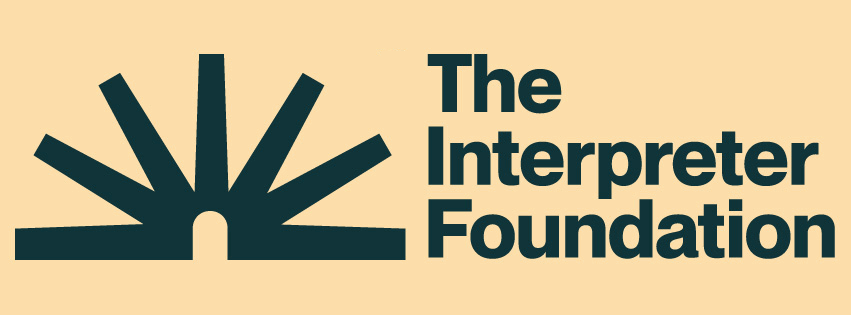We are very excited to announce The Interpreter Foundation’s Mesoamerica Lecture Series! Each lecture will be broadcast via Zoom and will take place on Wednesday evenings, starting at 7 PM MDT.
The Zoom link for all of the lectures is https://us02web.zoom.us/j/84094879926.
There is a YouTube playlist of the lectures at https://www.youtube.com/playlist?list=PLRMn4gyXMWLvEA27cH63lw2iq0gmLqSCe.
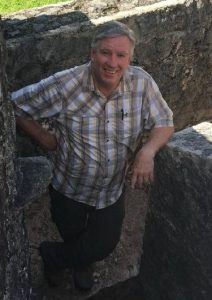 August 21: “Interpreter Foundation Book of Mormon Tour Preview,” Blake Joseph Allen
August 21: “Interpreter Foundation Book of Mormon Tour Preview,” Blake Joseph Allen
(owner of Book of Mormon Tours, and tour escort)
Blake describes his lecture as follows: “In several places within the pages of the Book of Mormon, it seems as if Mormon writes as though, in the latter days, we would have a map of the lands described in that great book. Such is not the case. However, we can follow the information from the Book of Mormon and combine that knowledge with modern research to follow the clues to learn more about those special lands. In our tour preview, we will discuss the daily outline of the tour, touch on some of the candidates for Book of Mormon locations such as the land of Nephi, the east wilderness, the land of Zarahemla, including a candidate for the Nephite hill Cumorah where the both the Nephite and Jaredite nations came to an end, and answer any questions about the tour.”
Blake Joseph Allen began his traveling days as a young boy of 10 years old when he had the opportunity to visit Mexico City with his father, Dr. Joseph L. Allen, founder of Book of Mormon Tours. Dr. Allen was conducting research in the Museum of Anthropology for his doctoral dissertation on the white god, Quetzalcoatl. That was the beginning of an experience of a lifetime for the Allen family. Blake spent many summers with his family traveling through the country of Mexico where he gained an appreciation and love for the Hispanic people, their culture, and their history.
Blake served a mission in the Chile Santiago South Mission from 1979 to 1981. He earned his bachelor’s degree in accounting at Southern Utah University with minors in both business administration and Spanish. He has been taking tours to Mexico and Guatemala for over 30 years and has taken more than 150 tours. He has a love of the Book of Mormon and enjoys being able to share those feelings with others.
He conducts tours each year to Mexico and Guatemala, the proposed lands of the Book of Mormon. In 2008, he and his father released the second edition of their book, Exploring the Lands of the Book of Mormon.
He and his wife Marion live in Richfield, Utah. They have six children and twenty grandchildren.
Blake says, “The company mission statement is that the Book of Mormon is a true account of two major civilizations that lived in the New World during pre-Colombian times. Its message is to teach of Christ and His Atonement. We believe that the more we understand the history, language, culture, and geography of the Book of Mormon, the more we understand the Book of Mormon. We have chosen Travel and Research to pursue this goal. We invite you to join us in exploring the lands of the Book of Mormon.”
Audio Player
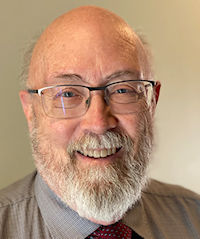 August 28: “The Importance, And Non-Importance, of Knowing the Geography of the Book of Mormon,” Dan Peterson
August 28: “The Importance, And Non-Importance, of Knowing the Geography of the Book of Mormon,” Dan Peterson
In this lecture, I will lay out my thoughts on how understanding the geography of the Book of Mormon can help us to better understand it, how such understanding can strengthen the case for the historicity of the Book of Mormon (and, thus, defend and strengthen testimonies), and how geographical models aren’t of ultimate importance.
Daniel C. Peterson (PhD, University of California at Los Angeles) is a professor emeritus of Islamic studies and Arabic at Brigham Young University, where he founded the University’s Middle Eastern Texts Initiative. He has published and spoken extensively on both Islamic and Latter-day Saint subjects. Formerly chairman of the board of the Foundation for Ancient Research and Mormon Studies (FARMS) and an officer, editor, and author for its successor organization, the Neal A. Maxwell Institute for Religious Scholarship, his professional work as an Arabist focuses on the Qur’an and on Islamic philosophical theology. He is the author, among other things, of a biography entitled Muhammad: Prophet of God (Eerdmans, 2007).
Audio Player
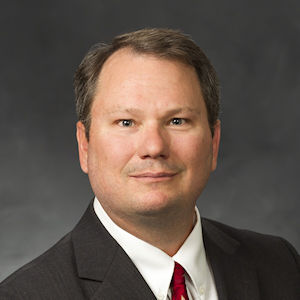 September 4: “Mesoamerican Writing Systems,” Kerry Hull
September 4: “Mesoamerican Writing Systems,” Kerry Hull
Writing has been independently invented five times in human history, and one of those was in ancient Mesoamerica. This lecture exams the various writing systems that developed beginning 3,000 years ago in Mesoamerica. There are more than a dozen attested forms of writing in the region, many coinciding with Book of Mormon populations. I will examine the nature of logographic and syllabic forms of representation in Mesoamerica, the sophistication and aesthetic beauty of their icons, and the different types of attested media on which writing occurred, including on gold. Finally, I will discuss the content and themes of Mesoamerican writing, focusing primarily on Maya hieroglyphic Mayan (since it is the best attested), but also looking at earlier forms that were present in Jaredite times.
Kerry Hull is a Professor in the department of Religion at Brigham Young University. He earned a B.A. in Spanish and B.A. in French in 1992 from Utah State University. He received an M.S. in Applied Linguistics from Georgetown University in 1993. He completed a Ph.D. in Linguistic Anthropology at the University of Texas at Austin in 2003. His academic interests include Maya linguistics and anthropology, Polynesian linguistics, historical linguistics, sociolinguistics, and Maya epigraphic studies. He has conducted linguistic, ethnographic, and archaeological fieldwork in Mexico, Belize, Guatemala, and Honduras. He specializes in the language and culture of the Ch’orti’ Maya of southern Guatemala. He has also carried out linguistic fieldwork on the Ua Pou dialect of Northern Marquesan and on the dialect used on the island of Raivavae in the Austral chain in French Polynesia.
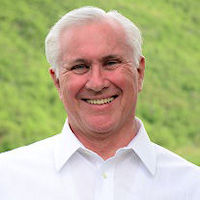 September 11: “Mesoamerica and the Book of Mormon Side by Side,” Brant Gardner
September 11: “Mesoamerica and the Book of Mormon Side by Side,” Brant Gardner
One of the reasons that many suggest that there is no archaeological evidence for the Book of Mormon is that they are looking for the wrong things in the wrong places. Rather than looking at the archaeology to see what Old World culture might be there, we should look at the Book of Mormon as a text created in a particular time and place, and find within the text where it reflects the times and places of its origin.
As we place the Book of Mormon side by side with what we know of Mesoamerican history, we can see how incidents in the text have been developed within the context of a Mesoamerican culture. That cultural context explains why Nephi’s people desired a king so early in Nephite history, and why the Nephite society ended at the time it did–and not before or after. In between, multiple correspondences with culture, time, and space support the idea that the Book of Mormon was written by authors who lived in a very specific, and reasonably known, culture and time.
Brant A. Gardner did his undergraduate work at Brigham Young University. He received a Master’s in Anthropology from the State University of New York at Albany, specializing in Mesoamerican ethnohistory. He works part time as a Research Associate for Scripture Central. He applied his understanding of Mesoamerican ethnohistory to provide a historical context for the Book of Mormon that informed his six-volume Second Witness: Analytical and Contextual Commentary on the Book of Mormon, as well as Traditions of the Fathers: The Book of Mormon as History.
He has also written other books examining topics important to Book of Mormon. He is the author of The Gift and Power: Translating the Book of Mormon, and most recently Engraven Upon Plates, Printed Upon Paper: Textual and Narrative Structures of the Book of Mormon, and The Plates of Mormon: A Book of Mormon Study Edition Based on Textual and Narrative Structures in the English Translation, each published by Kofford Books.
Gardner has also contributed a Book of Mormon Minute to the ScripturePlus app, a condensed commentary on two or three verses at a time from the Book of Mormon.
Gardner has presented at multiple FAIR conferences and two Sperry Symposia (now Come, Follow Me Symposium in Honor of Sidney B. Sperry).
Audio Player
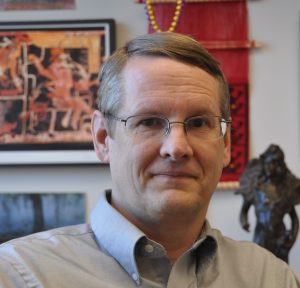 September 18: “Palenque World Tree,” Allen Christenson
September 18: “Palenque World Tree,” Allen Christenson
The ancient Maya believed that carved stone monuments, painted walls, and woven textiles were far more than mere decoration. They were living objects, each bearing a soul. Maya art, therefore, did not mimic reality; it was a sacred reality in itself, a kind of frozen ceremonial act created and given life by the artist in much the same way that the gods themselves created the world. A spectacular example of this kind of ensouled art from the Classic Maya world is found on the sarcophagus and surrounding tomb chamber of King K’inich Janab’ Pakal I of Palenque, who lived from AD 603-683. The central panel of the sarcophagus lid is dominated by a World Tree, or Tree of Life, similar to other trees in the temple panels of the nearby Group of the Cross. The World Tree was the principal symbol of the power to overcome death. Its blossoms and fruit represent the purity of the human soul. When death took a king—particularly one considered to be a divine being as were Maya rulers—the crisis took on universal proportions, threatening the very existence of the world and life itself. Royal tombs were constructed by the Maya as a desperate attempt to forestall this horror by ritually ensuring the king’s triumph over death and darkness.
Allen J. Christenson is a Professor of Precolumbian Studies in the Department of Comparative Arts and Letters at Brigham Young University. He has worked as a linguist, anthropologist, and art historian in the western highlands of Guatemala since 1978. His MA and PhD degrees are in Precolumbian art history and literature from the University of Texas, Austin. The primary focus of his work has been the world view and ceremonial cycles of traditionalist Maya, particularly in K’iche’ and Tz’utujil regions. He is the author of numerous articles and book chapters, as well as eight books, including Art and Society in a Highland Maya Community (2001), a two-volume translation of the Popol Vuh (2003, 2007), Bearing the Burden of the Ancients (2016) and a new translation and critical edition of the Title of Totonicapán (2022). He is married with three grown children and ten crazy-smart grandchildren.
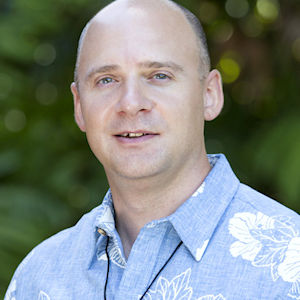 September 25: “Potential Volcanic Activity Related to Events in the Book of Mormon,” Benjamin Jordan
September 25: “Potential Volcanic Activity Related to Events in the Book of Mormon,” Benjamin Jordan
The eighth chapter of 3rd Nephi in the Book of Mormon presents a dramatic account of the destruction of many Nephite cities by natural causes. This destruction took place at the time of Christ’s death on the cross in ancient Israel. A wide variety of events, involving earthquakes, storms, landslides, floods, and a cloud of darkness are described as occurring all at the same time. Over the years, several scholars have suggested that these events may have been connected to a volcanic eruption. What is their evidence that supports this idea? This presentation will cover their reasoning, as well as some of the examples that have been used to support their arguments in favor of this idea.
“Dr. Ben,” as his students call him, is a volcanologist and geological oceanographer. He earned a B.S. in Geology, with University Honors, and a minor in physics, from Brigham Young University in 1999. While an undergraduate he was awarded a Link Foundation internship at Florida Atlantic University’s Harbor Branch Oceanographic Institution in Ft. Pierce, Florida, and served as president of the BYU Astronomical Society. In 2004, He earned a Ph.D. in Oceanography from the University of Rhode Island’s Graduate School of Oceanography, where he studied Central American volcanic history and deep-sea ash deposits. He also served as a scientific crew member aboard the ship, R/V Melville, during the 2001 G.L.I.M.P.S.E. scientific expedition to the central South Pacific, mapping and sampling deep-sea volcanoes between Tahiti and Rapa Nui (Easter Island). Upon completion of his Ph.D., he became an assistant professor of geology at United Arab Emirates University in the Middle East, after which he taught at Brigham Young University-Idaho for five years. He has been at the Brigham Young University-Hawaii campus since 2012, becoming a full professor in 2018, and dean of the Faculty of Sciences in 2022. In 2018, he served as a lecturer onboard the ship, M/V World Odyssey, as part of the Semester at Sea program and he is currently a crew member of the Polynesian voyaging canoe, Iosepa. He has geologic and/or oceanographic field experience in 38 U.S. states and 31 countries. He is a Fellow of The Explorers Club and a member of the Geological Society of America, the American Geophysical Union, and the International Association of Volcanology and Chemistry of the Earth’s Interior. He is the author of four books and is first or contributing author of many peer-reviewed articles and presentations. He has also served as a reviewer for multiple academic journals and organizations, including the National Science Foundation and the journal Geology.
Audio Player
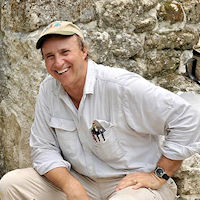 October 2: “The Cultural and Natural Legacy in the Cradle of Maya Civilization: New Perspectives from the Mirador-Calakmul Karst Basin System,” Richard D. Hansen
October 2: “The Cultural and Natural Legacy in the Cradle of Maya Civilization: New Perspectives from the Mirador-Calakmul Karst Basin System,” Richard D. Hansen
The Mirador Basin, located in northern Guatemala and southern Mexico, is a unique geographical area and contains some of the earliest and largest Maya cities, dating back to the Pre-Classic period (1600 BC to 150 AD). This region is crucial for understanding the origins of Maya civilization. The basin houses some of the largest ancient cities in the Western Hemisphere, including the earliest Maya cities and the tallest pyramids in the Americas. It features the world’s first “superhighway” system and possibly one of the first political states in the Americas. The area is the last tract of intact tropical forest in Central America, home to diverse flora and fauna, including newly discovered species. It has a high concentration of jaguars and serves as a major flyway for migratory birds. Archaeologically, the basin contains a wealth of Pre-Classic Maya artifacts, including figurines and ceramics dating back to 1000 BC. Evidence suggests interaction between the Maya and Olmec cultures during this early period. Early Maya society in this region showed signs of social stratification and royal symbols by 800-900 BC. The Mirador Basin is thus a cradle of Maya civilization, offering unique insights into the development of complex societies in Mesoamerica while also being an area of exceptional biodiversity and ecological importance.
Dr. Richard D. Hansen is the Director of the Mirador Basin Project (Guatemala) and Research Professor at Idaho State University, and previously has taught at the University of Utah and UCLA. He is the founder and president of the FARES Foundation. He graduated with a double major B.S. degree (with honors) in Spanish and Archaeology from Brigham Young University in 1978, and an M.S. degree in Anthropology in 1984. He was a Fulbright Scholar in Guatemala from 1989-1990, and he received his Ph.D. from UCLA (with highest honors) in 1992.
He was named “One of 24 individuals that changed Latin America” (by Latin Trade Magazine). He was named Who’s Who in America in 2024 and received the Albert Nelson Marquis Lifetime Achievement Award. He received the highest possible award in Guatemala in 2017, the Order of Quetzal, Gran Gruz (Guatemala), Orden de la Monja Blanca in 2019 from the Guatemala Ministry of Defense. In 2014, he was the Kislak Lecturer at the Library of Congress. In 2012, he was the Chevalier des Arts et des Lettres in France, and the Orden del Pop in Guatemala, in 2009 he was awarded the Achievement Award and Professor of the Year by Idaho State University, in 2008, he was named Environmentalist of the Year for Latin America by the Latin Trade Association, and in 2005, the National Order of Cultural Heritage by the nation of Guatemala.
He has published 228 scientific and popular papers, 3 books, and 33 book-length technical volumes. His programs have been crucial in conserving 810,000 acres of tropical forest in Guatemala.
He has been a co-organizer of several major Maya exhibits in museums. His work has been featured in 36 film documentaries, including work for National Geographic and the Discovery Channel. He was the principal consultant for CBS’ Survivor Guatemala, National Geographic’s The Story of God with Morgan Freeman, and Mel Gibson’s Apocalypto.
Audio Player
These lectures will help enrich your tour of an already fascinating and historic land. We look forward to joining you all in Mesoamerica!


